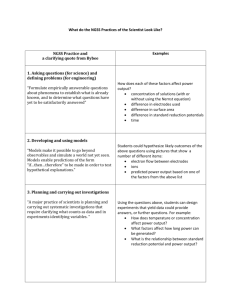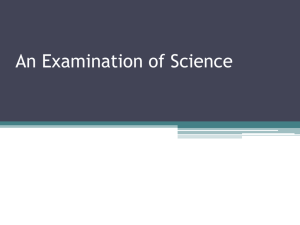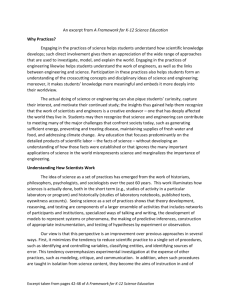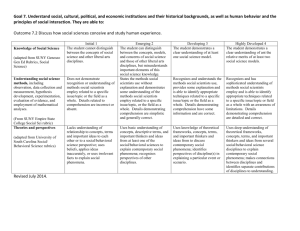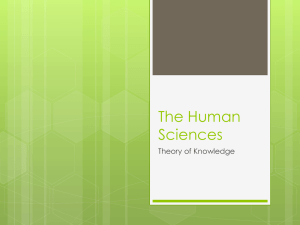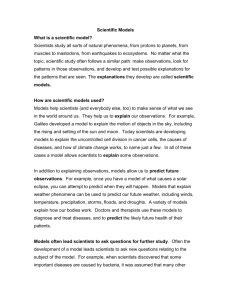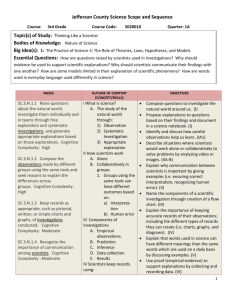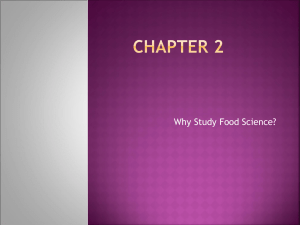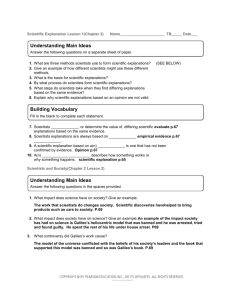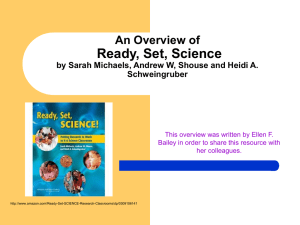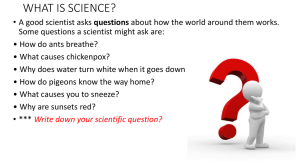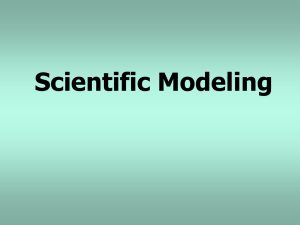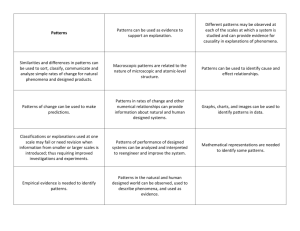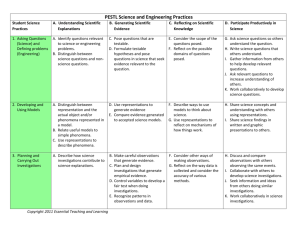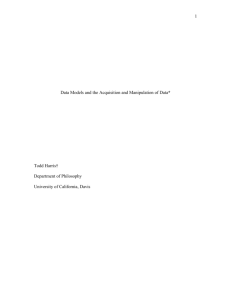Scientific Models Powerpoint
advertisement
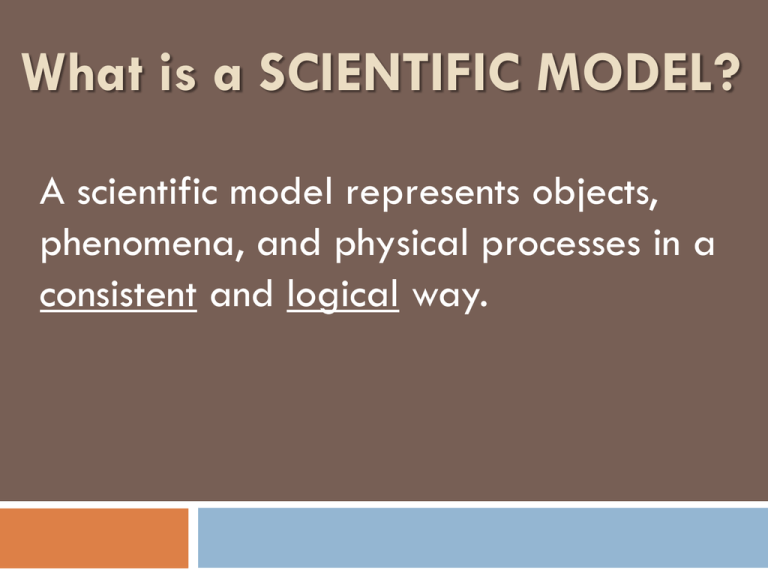
What is a SCIENTIFIC MODEL? A scientific model represents objects, phenomena, and physical processes in a consistent and logical way. Scientists develop models about many different natural phenomena Proton particles in light Weather systems How muscles move – like when you shoot a basketball How dinosaurs behaved on the planet before humans When earthquakes hit or volcanoes erupt How different ecosystems work – deserts, oceans, and forests Can you come up with any examples of some SCIENTIFIC MODELS? Hint: What model did you construct last year? Scientific PROCESS of studying the world around us: A. Make observations B. Look for patterns in those observations C. Develop and test for possible explanations Let’s act like SCIENTISTS? Observations Patterns Possible Explanations Ex. Leaves change colors and fall off trees Ex. This happens every year at about the same time Does this happen because… • It gets colder? • The days are shorter? • There is less sun? Ex. Hiccups Ex. This happens every time a person eats to fast Does this happen because… • You eat too much food? • Something is triggering a spasm in your stomach? Blinking eyes Dark clouds Drop a ball and a paper clip Having twins Cycles of the moons Examples of scientific PROCESSES you have participated in: Gill Flap/Fish Temperature lab Animal Behavior experiments Making observations & finding patterns Making observations, finding patterns and then developing and testing Jane Goodall and the chimps Making observations, finding patterns in tool making and then developed ideas about how they were similar to us Once scientists have TESTED and EXPLAINED the phenomena, those EXPLANATIONS are called… SCIENTIFIC MODELS! SCIENTIFIC MODELS… A. Explain observations B. Predict future observations C. Be realistic Examples of SCIENTIFIC MODELS: A model of the motions of the sun, moon and earth (which you participated in last year) A model of predicting eclipses Models that explain weather phenomena can be used to predict weather Models lead scientists to ask questions Diseases caused by bacteria discovered by scientists Your ANIMAL BEHAVIOR experiments Looking back on your animal behavior experiment, explain in a few sentences any NEW questions you would now ask after getting your results? How are models communicated? Graphs How are models communicated? Drawings How are models communicated? Equations 2 A=πr Can you think of any other equations that scientists and mathematicians use to explain data? Model vs. Representation A model is the IDEA Graphs, drawings and equations are the REPRESENTATION of the model or idea The Black Box/Mystery Maker Experiment 6th Grade Think back to your explanations for how the Black Box works… What did you do? Look for patterns in your observations? Develop ideas how it might have worked? Communicate your ideas to other scientists (in the class) using representations of your idea? How do you decide if a model is “right”? A community of scientists may have more than one model to explain a given phenomena Many models were proposed to explain the “Black Box” experiment from 6th grade Were all of these models of the “Black Box” equally valid? Let’s discuss. How do you decide if a model is RIGHT? Are multiple models for the same phenomena equally valid? Just because there are multiple models, does not mean that they both can’t be valid Can scientists change their SCIENTIFIC MODELS? Did you change your Black Box model? Scientists DO change their models to better fit the criteria of the scientific model Explain observations Predict future phenomena Be realistic IT’S YOUR TURN TO BE THE SCIENTIST! You will be developing your own models to explain some interesting genetic phenomena You will be developing models to explain how seeds that are round and wrinkled have mainly round peas for offspring (kids).
